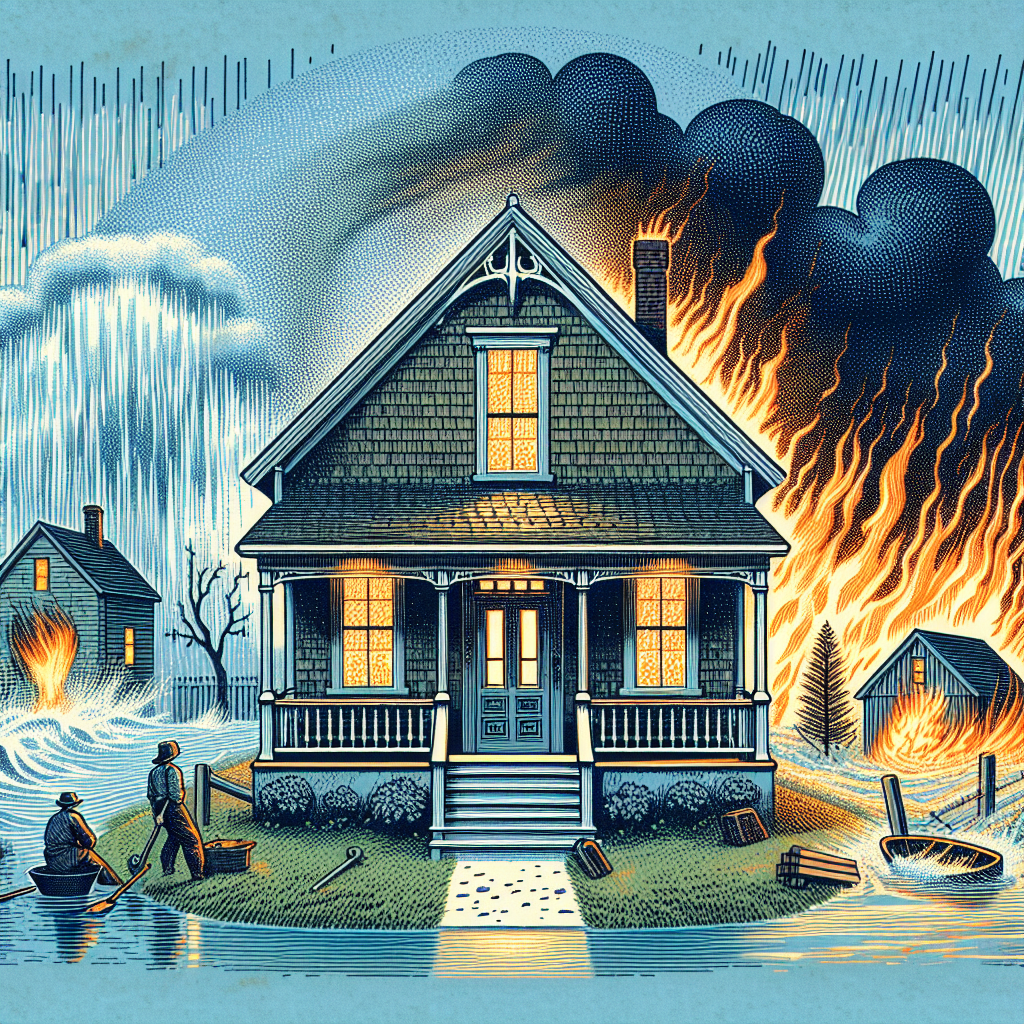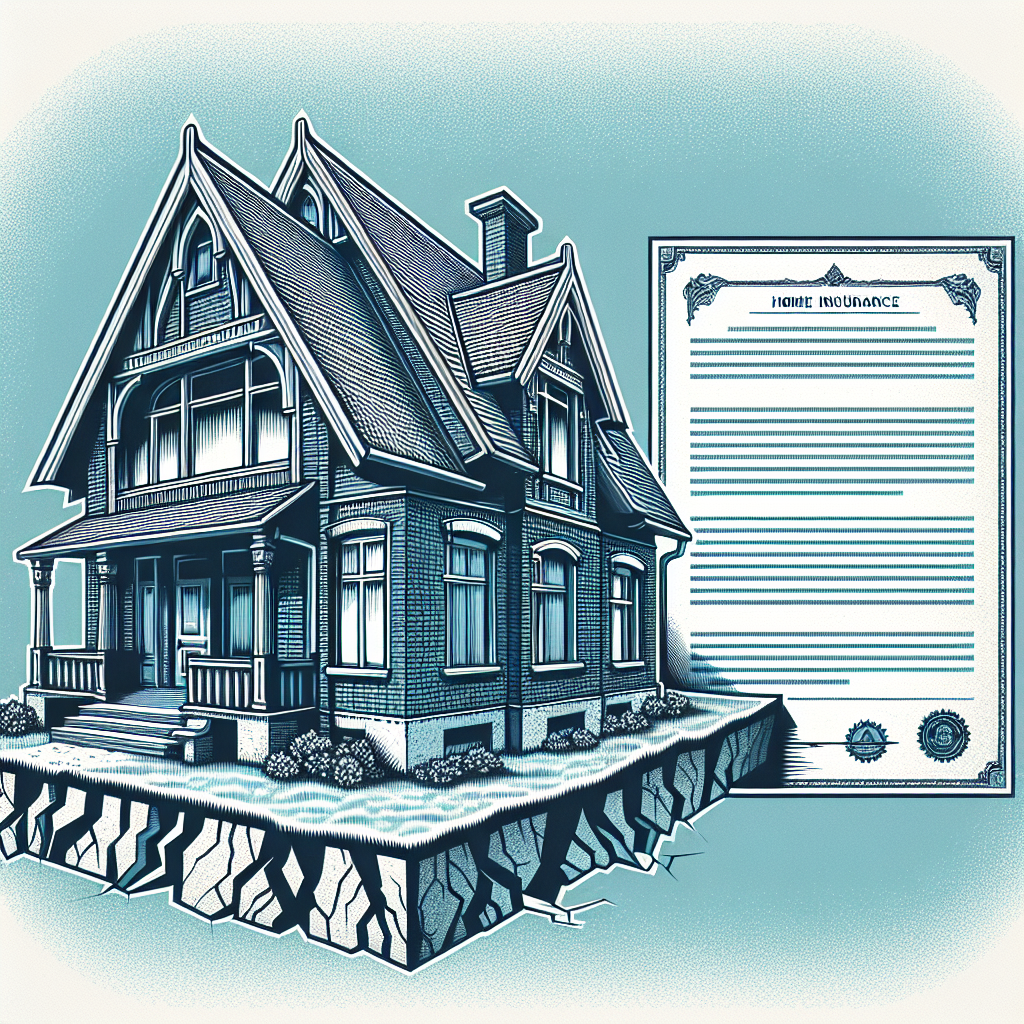Filed under Home Insurance on
Most Home Insurance Policies Provide Coverage For Quizlet

If you have ever typed Most Home Insurance Policies Provide Coverage For Quizlet into a search bar while cramming for an insurance exam or trying to decode what your homeowners policy actually does, you are not alone. The phrase shows up on flashcards and practice tests because it distills a big idea: standard home insurance protects your house, your stuff, and your liability against sudden and accidental losses—up to the limits and terms you choose. This guide unpacks that simple statement into practical detail so you understand what is and isn’t covered, what endorsements close gaps, and how to right-size your protection in a changing market.
What a Standard Homeowners Policy Covers
Most people carry an HO-3 policy, the most common form for single-family homes. Condos usually use HO-6, renters use HO-4, and high-value homes sometimes use HO-5. The structure is similar across forms: six core parts labeled A through F.
The Six Core Coverages (A–F)
- Coverage A – Dwelling: Pays to repair or rebuild the main structure if it is damaged by a covered peril. Limits are based on replacement cost, not the price you paid for the property.
- Coverage B – Other Structures: Covers detached structures like a garage, fence, shed, or gazebo. Typically 10% of Coverage A by default, with options to increase.
- Coverage C – Personal Property: Protects your belongings—furniture, electronics, clothing—on a named-perils basis in an HO-3 and on an open-perils basis in an HO-5. Off-premises coverage usually applies worldwide, often at 10% of the on-premises limit.
- Coverage D – Loss of Use (Additional Living Expenses): Pays for temporary living costs if a covered loss makes your home uninhabitable. Hotels, short-term rentals, meals above normal, pet boarding, and laundry can be included.
- Coverage E – Personal Liability: Protects you if you are legally responsible for bodily injury or property damage to others. This can cover legal defense costs and judgments up to the policy limit.
- Coverage F – Medical Payments to Others: Offers small no-fault medical coverage for guests injured on your property, regardless of negligence, typically $1,000–$5,000.
Perils: Named vs. Open
Coverage depends on the cause of loss. Policies use two frameworks:
- Open-perils (all-risk): Covers any cause of loss unless explicitly excluded. HO-3 uses this for the dwelling; HO-5 uses it for both dwelling and personal property.
- Named-perils: Covers only perils listed in the policy. For personal property in an HO-3, typical named perils include fire, lightning, windstorm, hail, explosion, smoke, vandalism, theft, riot/civil commotion, aircraft/vehicles, falling objects, weight of ice/snow/sleet, accidental discharge of water/steam from plumbing or appliances, freezing of plumbing, sudden tearing/cracking of heating/AC systems, volcanic eruption, and damage from artificially generated electrical current.
Understanding this distinction helps you predict how claims will be evaluated. When in doubt, check whether the cause of the loss is excluded.
What Most Policies Exclude
Exclusions are just as important as coverages. Common exclusions include:
- Flood (rising groundwater, storm surge, inundation) and surface water
- Earthquake, earth movement, sinkhole (sometimes endorsable)
- Sewer or drain backup (endorsement available)
- Wear and tear, rot, maintenance issues, neglect
- Pest or vermin (termites, rodents)
- Mold and fungi beyond limited sublimits or except as a result of a covered cause
- Intentional loss, war, nuclear hazards
- Business activities and home-sharing platforms without specific endorsements
- Certain dog breeds or exotic pets for liability (varies by insurer and state)
Some items are covered but come with sublimits for theft or specific categories, such as jewelry, watches, furs, firearms, silverware, cash, and business property. You can schedule high-value items to increase limits and broaden perils.
Replacement Cost vs. Actual Cash Value
How your claim is paid matters as much as whether it is covered.
- Replacement Cost (RC): Pays the cost to repair or replace with new materials of like kind and quality, without deduction for depreciation. Many HO-3 policies cover the dwelling at RC if you insure to value and satisfy policy conditions.
- Actual Cash Value (ACV): Replacement cost minus depreciation. Often applies to personal property by default. Upgrading to RC on contents is available with many carriers.
Because appliances, roofing, and electronics depreciate quickly, ACV settlements can be much lower than expected. Upgrading to RC, especially for contents and roofs, often pays off after a single claim.
Real-World Coverage Scenarios
- Kitchen fire: Covered under dwelling and personal property. Smoke damage and cleanup are included. Loss of use may pay for temporary accommodations.
- Pipe bursts in winter: Typically covered as sudden and accidental water damage. Damage to walls, floors, and personal property may be covered; the cost to repair the pipe itself may be limited.
- Windstorm blows off shingles: Wind is usually covered; cosmetic marring to metal roofs can be limited depending on endorsements. Deductibles may be a percentage of the dwelling limit in coastal areas.
- Theft from your car: Personal property stolen from a vehicle generally falls under the home policy’s off-premises coverage, subject to sublimits and your home deductible. The car damage falls under auto insurance.
- Tree falls on neighbor’s fence: Your policy typically covers your fence if your tree falls due to a covered peril. If your healthy tree falls and damages a neighbor’s property due to wind, their policy often responds, not yours—unless negligence is shown.
- Flooded basement after heavy rain: Rising groundwater is excluded without a flood policy. Sewer backup needs a specific endorsement.
- Earthquake shakes drywall and foundation: Excluded without an earthquake endorsement or separate policy.
Decoding “Most Home Insurance Policies Provide Coverage For Quizlet”
Why does this phrase show up so often in study materials? Because exam prep often reduces complex policy language into a quick recall line. When you see Most Home Insurance Policies Provide Coverage For Quizlet, the test-friendly translation is: policies protect the dwelling, other structures, personal property, loss of use, and personal liability/medical payments against sudden and accidental perils, subject to exclusions and limits.
This article goes beyond a flashcard. If you encountered Most Home Insurance Policies Provide Coverage For Quizlet while studying, remember that the “coverage for” part hinges on three levers you control: the perils covered (open vs. named), the limits and sublimits you choose, and the endorsements you add to plug common gaps.
Endorsements That Close Common Gaps
Endorsements customize a policy to your home’s risks and valuables. Consider:
- Extended or Guaranteed Replacement Cost: Adds an extra 10%–50% (or more) above Coverage A if rebuilding costs spike after a catastrophe.
- Ordinance or Law: Pays extra to bring repairs up to current building codes, often 10% default with options to increase.
- Water Backup: Covers damage from sewer, drain, or sump pump backup.
- Service Line: Pays to repair underground utility lines on your property (water, sewer, electric) from wear and tear.
- Equipment Breakdown: Covers sudden mechanical or electrical breakdown of systems like HVAC, appliances, well pumps, and smart home devices.
- Scheduled Personal Property: Itemizes jewelry, art, collectibles, or instruments for higher limits and broader perils (including mysterious disappearance).
- Special Roof Settlement or Matching Siding: Improves how roof claims are paid and addresses aesthetic matching.
- Home-Sharing and Home Business Endorsements: Extend liability and property protection when renting rooms or running a business at home.
- Flood and Earthquake: Separate policies or endorsements depending on your state and carrier.
Industry Trends Shaping Coverage and Cost
The home insurance market has been evolving quickly due to several macro forces:
- Climate and Catastrophes: More frequent and severe wind, hail, wildfire, and convective storms have increased catastrophe losses. Insurers respond with tighter underwriting, higher deductibles, and more granular pricing.
- Rebuilding Inflation: Volatile labor and materials costs raise claim severities. Extended replacement cost and ordinance or law coverage have become more valuable.
- Roof Age and Condition: Many carriers use roof-specific pricing and settlement terms. Roof inspections, impact-resistant shingles, and roof age documentation can affect eligibility and price.
- Reinsurance Costs: Higher reinsurance rates flow through to premiums, especially in catastrophe-prone regions.
- Claim Frequency vs. Severity: Water damage remains a leading non-cat loss. Mitigation technology (smart water shutoff valves) is increasingly incentivized.
According to industry sources such as the Insurance Information Institute and the National Association of Insurance Commissioners, loss trends and rebuilding costs have outpaced general inflation in several recent years, which is why you may see premium increases even without claims. The right coverage mix, discounts, and mitigation steps can temper those increases.
Setting Smart Coverage Limits
Right-sizing your policy starts with replacement cost—not market value.
- Dwelling (Coverage A): Use a replacement cost estimator that accounts for square footage, local labor rates, quality of finishes, custom features, and code upgrades. Update after renovations.
- Other Structures (Coverage B): Increase above the default if you have extensive fencing, detached garages, or large sheds.
- Personal Property (Coverage C): Commonly 50%–70% of Coverage A, but adjust based on a home inventory. Consider RC on contents.
- Loss of Use (Coverage D): Aim for 20%–30% of Coverage A or enough to fund several months of alternative housing in your area.
- Personal Liability (Coverage E): Many households choose $300,000–$500,000 at minimum. Consider an umbrella policy for $1–$5 million in extra liability if you have assets, a pool, rental properties, or teen drivers.
- Medical Payments (Coverage F): Typically $1,000–$5,000; higher limits are inexpensive and can be helpful for minor injuries.
Cost Drivers and Ways to Save Without Sacrificing Protection
Premiums reflect your home’s risk profile and claims data. Key factors include location, wildfire/wind/hail exposure, roof age and material, home construction, claims history, credit-based insurance scores where allowed, presence of a pool or trampoline, dog liability considerations, and the deductibles you select.
Ways to save smartly:
- Bundle Home and Auto: Often yields 10%–25% discounts and may improve claim coordination.
- Increase Deductibles Strategically: Consider separate percentage deductibles for wind/hail if offered, and a higher all-perils deductible you could comfortably pay.
- Mitigation Improvements: Impact-resistant roofing, wildfire defensible space, water leak sensors and automatic shutoff valves, centrally monitored alarms, and deadbolt locks can earn credits and reduce losses.
- Roof Documentation: Keep invoices and photos of roof replacement and updates.
- Schedule Valuables Instead of Raising Blanket Limits: Targeted endorsements can be cost-effective and broaden protection.
- Annual Coverage Review: Update for renovations, new valuables, and building cost changes.
How Claims Work (and How to Avoid Headaches)
- Protect People and Property: Ensure safety first, then take reasonable steps to prevent further damage (shut off water, board windows).
- Document Everything: Photos and videos of the damage, receipts for emergency repairs, and an itemized list of damaged property.
- Notify Your Insurer Promptly: Report the loss and provide initial details. Ask about temporary living coverage if needed.
- Meet the Adjuster: Walk them through damage, share documentation, and discuss scope. Keep notes of conversations and timelines.
- Review Settlement Terms: Understand ACV vs. RC and recoverable depreciation. In RC claims, you may be paid in two stages: initial ACV and then recoverable depreciation after repairs.
- Choose Reputable Contractors: Prefer licensed, insured contractors. Beware of assignment-of-benefits forms you do not understand.
- Appeal If Needed: If a claim is denied or underpaid, request clarification in writing, supply additional documentation, or escalate. Independent appraisals and the policy’s appraisal clause can help resolve disputes.
Common Misconceptions and Exam Pitfalls
- Home Insurance Is Not a Maintenance Plan: It covers sudden and accidental loss, not wear and tear or deferred maintenance.
- Flood vs. Water Damage: Internal plumbing leaks may be covered; rising water from outside is flood and needs separate coverage.
- “My Neighbor’s Tree Damaged My Property, So They Pay”: Liability generally requires negligence. Otherwise, your policy covers your damage if the peril is covered.
- All Personal Property Is Fully Covered: Sublimits apply to categories like jewelry, firearms, silverware, cash, and business equipment—schedule or increase limits as needed.
- Roommates’ Property: Not automatically covered unless they are named insureds or relatives in the household.
- Claim Frequency Doesn’t Matter: Multiple small claims can affect pricing and eligibility; consider higher deductibles and self-insuring minor losses.
Study Note: Turning Flashcards Into Real-Life Protection
If you encountered Most Home Insurance Policies Provide Coverage For Quizlet while studying, use it as a mnemonic—but graduate from memorization to mastery. The real-world translation is understanding perils, exclusions, valuation methods, and endorsements. Flashcards help you pass a test; this knowledge helps you protect your household and wealth.
Quick FAQs
Is my home covered for any damage that happens?
No. Coverage depends on whether the cause is a covered peril and not excluded. Wear and tear, flood, and earthquake often require separate coverage or endorsements.
How do I know if I have enough dwelling coverage?
Use a detailed replacement cost estimator, not market value. Revisit annually and after renovations. Consider extended or guaranteed replacement cost to buffer inflation and code upgrades.
What about my jewelry and collectibles?
Standard policies have low sublimits for theft of jewelry, watches, and furs. Schedule high-value items for higher limits and broader peril coverage, often including mysterious disappearance.
Does home insurance cover short-term rentals?
Not by default. Renting out your home or a room can create coverage gaps. Ask about home-sharing endorsements or a landlord policy if renting regularly.
Are water leaks covered?
Sudden and accidental discharge from plumbing is typically covered, but long-term seepage and mold may not be. Water backup from sewers or sump pumps requires an endorsement.
What liability limit should I choose?
Many households select $300,000–$500,000. If you have significant assets or risk factors like a pool or teen drivers, consider a personal umbrella policy for additional protection.
Is personal property covered away from home?
Yes, usually worldwide but at reduced limits for off-premises losses. Certain categories have sublimits. Consider endorsements if you travel with expensive gear.
A Checklist to Strengthen Your Policy
- Confirm your policy form (HO-3 vs. HO-5) and perils structure.
- Verify dwelling replacement cost and consider extended/guaranteed RC.
- Upgrade contents to replacement cost if available.
- Increase ordinance or law coverage to reflect local codes.
- Add water backup, service line, and equipment breakdown if relevant.
- Schedule jewelry, art, instruments, or collectibles.
- Install mitigation: water shutoff, monitored alarms, impact-resistant roofing.
- Review liability limits and consider an umbrella policy.
- Create and update a home inventory with photos and receipts.
- Re-shop every 1–2 years or after major life changes to maintain value.
Putting It All Together
When stripped to a test-prep sound bite, the idea behind Most Home Insurance Policies Provide Coverage For Quizlet is straightforward: homeowners insurance is designed to cover your house, your belongings, and your liability against sudden and accidental loss, within the bounds of your policy’s language and limits. But the details determine outcomes—especially when losses are large or ambiguous.
Take time to calibrate your dwelling replacement cost, elevate key endorsements like water backup and ordinance or law, and consider broader forms like HO-5 when available. If your study plan includes phrases such as Most Home Insurance Policies Provide Coverage For Quizlet, use them as springboards to ask better questions: Which perils are covered? What exclusions apply? How will the loss be valued? What endorsements could close the gaps that most people overlook?
The right answers, customized to your home and risk tolerance, transform a flashcard prompt into a resilient protection plan—one that stands up to real-world claims, not just exam questions. And if you ever see that familiar line again—Most Home Insurance Policies Provide Coverage For Quizlet—remember that the smartest coverage is the one you tailor before a loss, not after it.




